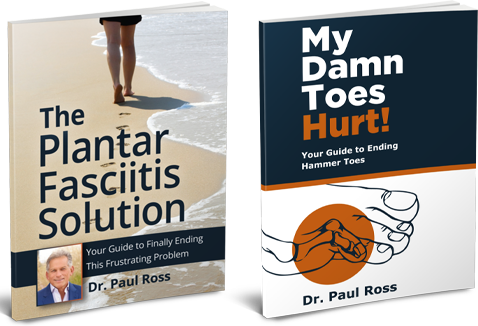 Varicose veins are a common problem that our Potomac MD podiatrist sees, and they appear mostly on the lower leg, ankles, and feet. These are enlarged, twisted veins that appear as bluish, gnarled cords beneath your skin. To some people, varicose veins are only a cosmetic concern, but for others they cause serious circulatory problems, as well as aching and discomfort.
Varicose veins are a common problem that our Potomac MD podiatrist sees, and they appear mostly on the lower leg, ankles, and feet. These are enlarged, twisted veins that appear as bluish, gnarled cords beneath your skin. To some people, varicose veins are only a cosmetic concern, but for others they cause serious circulatory problems, as well as aching and discomfort.
What Causes Varicose Veins? Our Potomac MD Podiatrist Has Answers
Arteries carry blood from your heart to the rest of your body, while veins return the blood to your heart so the blood can be recirculated. This requires the veins in your legs to work against gravity. Muscle contractions in your lower legs act as pumps, and elastic vein walls help blood flow back to your heart. Tiny valves in your veins open as blood flows toward your heart, then close to stop blood from flowing backward. When these valves weaken, they allow blood to flow backwards and pool in your veins, causing the veins to become enlarged.
There are many causes for varicose veins. Our Potomac podiatrist has listed some of the most common ones here.
Contributing Factors to Varicose Veins, According To Our Potomac MD Podiatrist
- Heredity
- Women are three times as likely to develop them as men, due to hormonal changes during pregnancy, menstrual cycles, or menopause
- Aging – our veins become less elastic as we age
- Obesity
- Circulatory disorders
- Standing for long periods of time
Left untreated, varicose veins can lead to phlebitis (inflammation of the veins), painful ulcers near the ankles, or blood clots that cause swelling. Some symptoms are annoying, but not alarming. However, if you experience any of the symptoms below, seek treatment from your doctor or make an appointment with your podiatry office in Potomac.
Symptoms For Contacting Your Potomac MD Podiatrist Or Doctor
- Achy, sore, or heavy feeling in your legs or feet
- Burning, throbbing, muscle cramping, or swelling in your lower legs or feet
- Pain increases after sitting or standing for long periods
- Appearance of skin or veins, such as darkening of the skin around the veins; bleeding veins; swollen, red veins; skin breaking around the veins; or skin ulcers or rash by your ankle
- Skin on your ankle or lower leg becomes thick and changes color
Your Potomac podiatrist can offer the best diagnosis for treatment of varicose veins, but there are some steps you can take at home to care for your feet.
Caring for Your Feet
- Avoid long periods of sitting or standing
- Elevate your legs periodically
- Exercise regularly
- Maintain an ideal body weight
- Avoid wearing high heels – flats tone your calf muscles and help improve blood flow
- Eat foods low in salt and high in dietary fiber. Include foods high like blueberries, blackberries, spinach, garlic and onions, which are high in bioflavanoids. These foods have properties that keep veins healthy.
- Wear compression stockings (available over the counter). Compression stockings steadily squeeze your legs, helping veins and muscles move blood more efficiently.
Finally, there are a variety of surgical treatments for varicose veins. Talk to your Potomac MD podiatrist to discover the best solution for you.
The information provided in this article is not meant to be medical advice and is for educational purposes only. If you would like to learn more about this and other topics related to foot and ankle care, feel free to contact The Podiatry Center, with a convenient podiatry office location near Potomac MD, by clicking here or by calling 301.656.6055.

